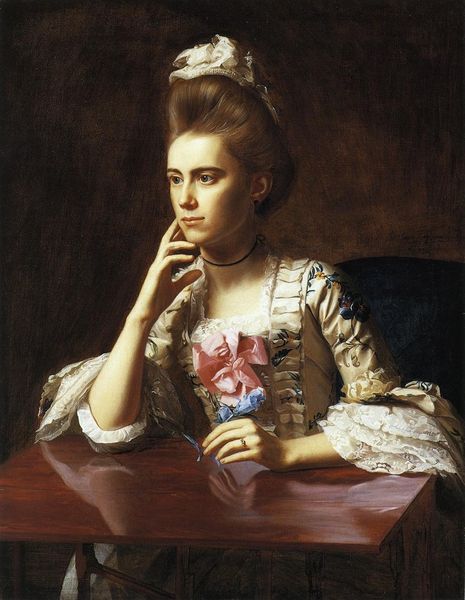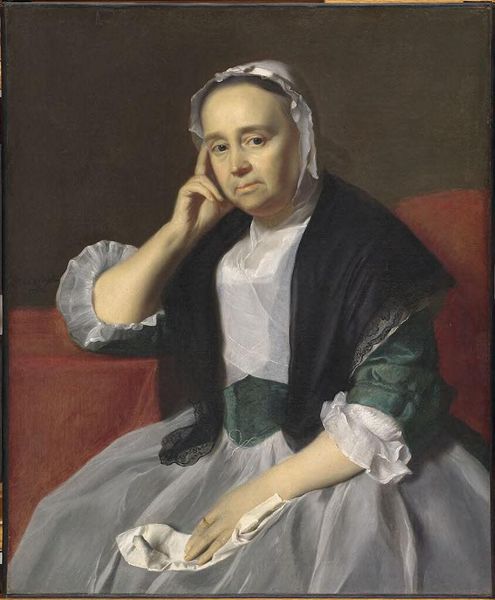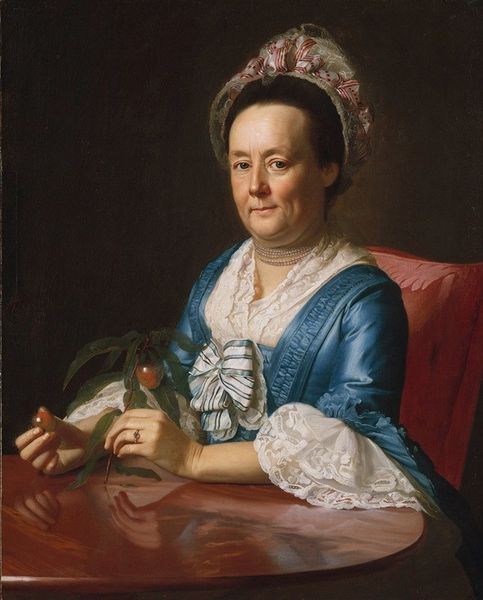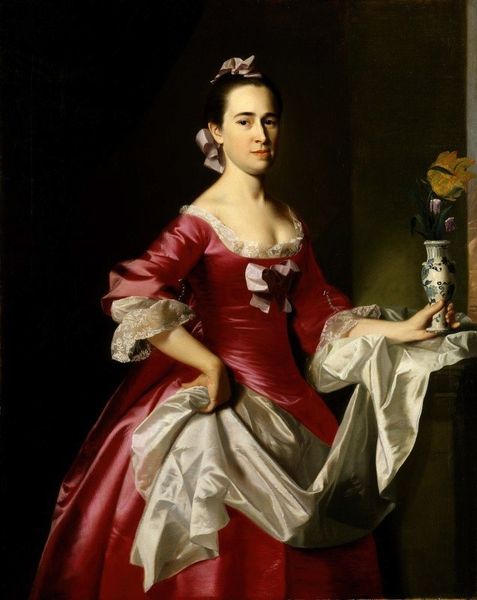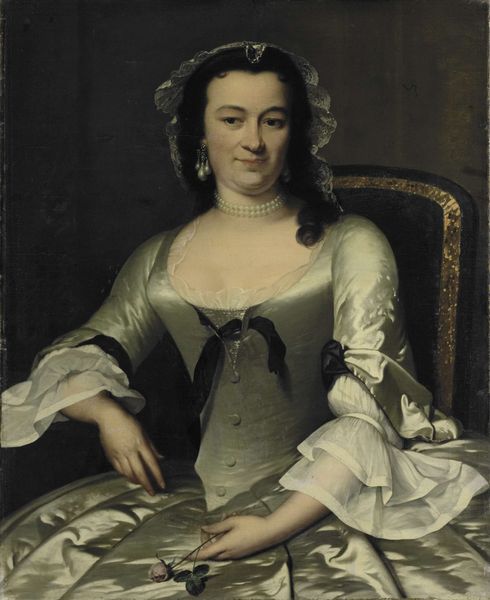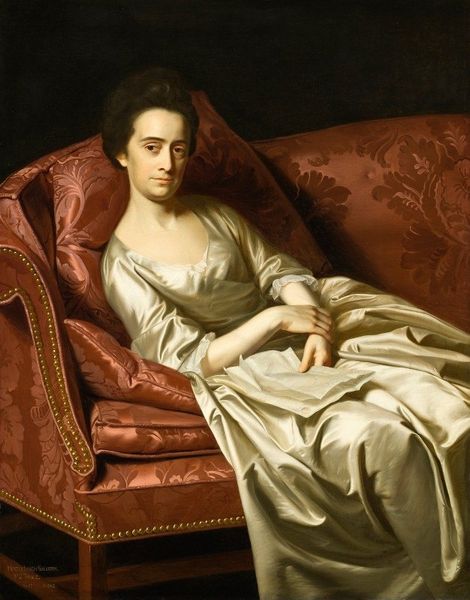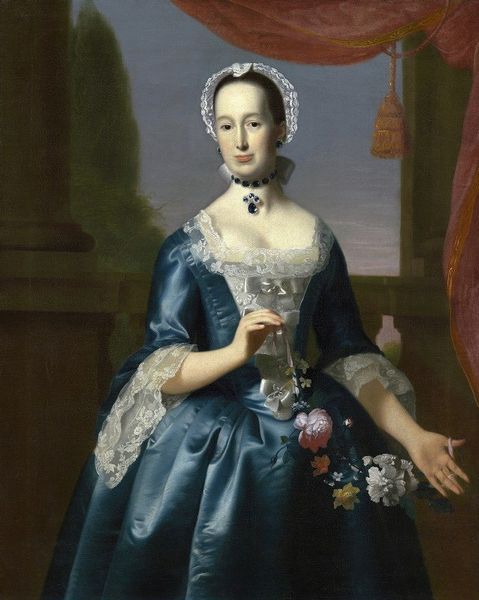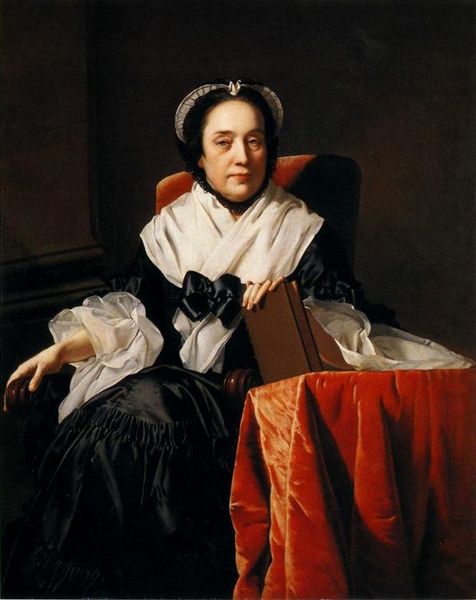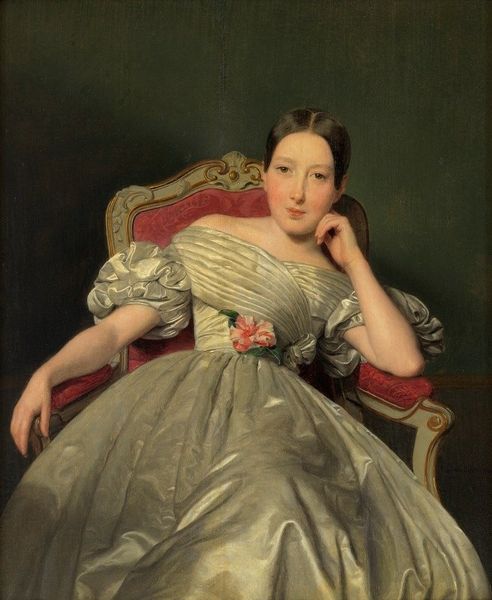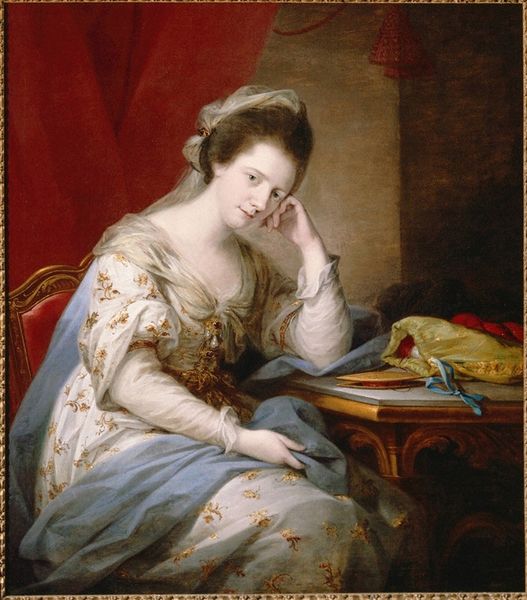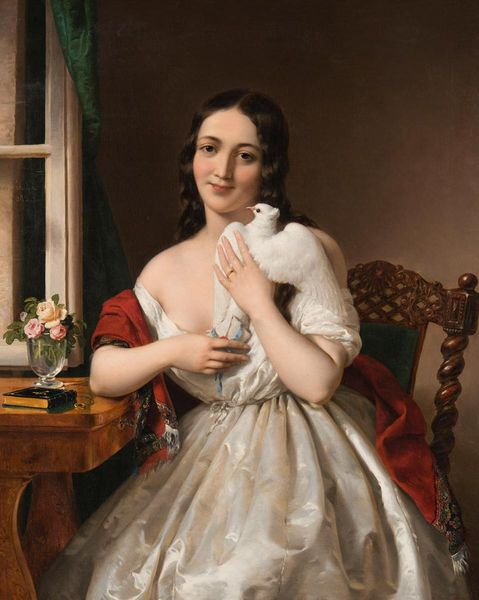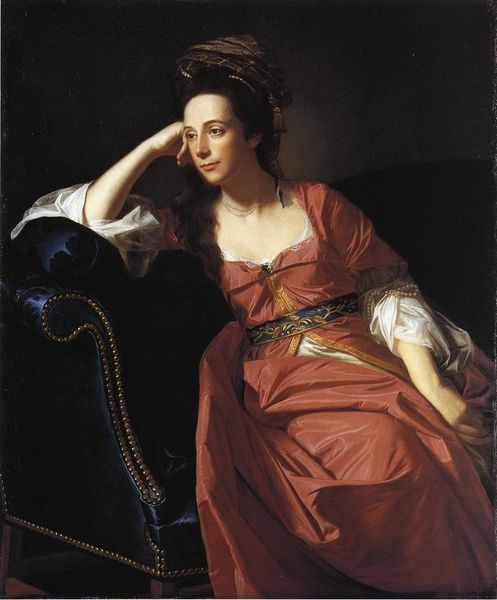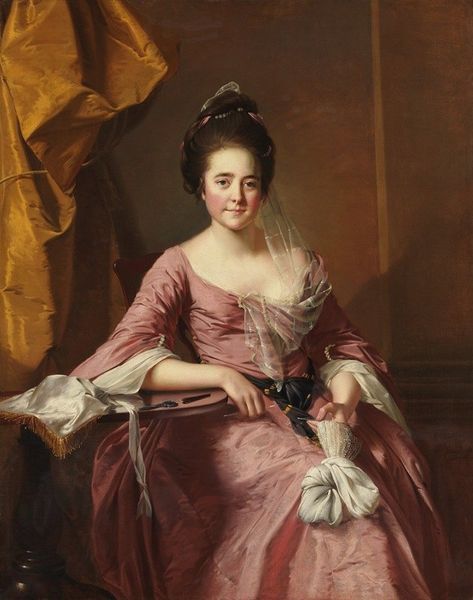
Dimensions: 127 x 100 cm
Copyright: Public domain
Curator: Looking at this portrait, painted in 1772 by John Singleton Copley, entitled *Dorothy Quincy*, I am immediately struck by the interplay between the dark background and the luminous pink of her dress. It creates a sense of contained elegance. What are your initial thoughts? Editor: That pink, it almost pops out of the canvas! The materiality is incredible; Copley clearly understood the weight and texture of the fabric. Think about the societal message – the color, the delicate lace… these were markers of status, carefully constructed and consumed. Curator: Indeed. Quincy was from a prominent Massachusetts family; she eventually married John Hancock, a leading figure in the American Revolution. The portrait speaks volumes about the social elite on the brink of revolution. Notice her thoughtful pose, too – not frivolous, but engaged, hinting at her role within that shifting political landscape. Editor: It is important to acknowledge that the crafting of such a lavish gown involved a network of laborers, both skilled and unskilled. The textile production, the seamstresses...all invisible in this depiction, yet fundamental to creating the image of elite femininity and its association with luxury goods in the colonies. Curator: Absolutely. These portraits functioned as visual representations of power and legacy. They were displayed prominently in homes, conveying not only individual status but also the lineage and social connections of the family. Even the artistic style contributes, right? The influence of Baroque art traditions and the then contemporary Academic art—very stylish at that time. Editor: Style certainly signified connection with sophisticated European taste. Consider Copley himself – an American artist navigating the complex artistic landscape of the colonies, later to relocate permanently to England. His style here signals not just wealth, but a careful cultivation of taste. Curator: So, it's more than just a pretty picture; it encapsulates a society on the cusp of change. Editor: Exactly. Examining it allows us to question the manufacturing of wealth, and to interrogate who is included, or rather excluded, from this painted narrative of pre-Revolutionary Boston. Curator: It seems Copley created an artwork for a brave new world where appearances are designed to convey social significance. Editor: A point worth pondering as we move onward!
Comments
No comments
Be the first to comment and join the conversation on the ultimate creative platform.
